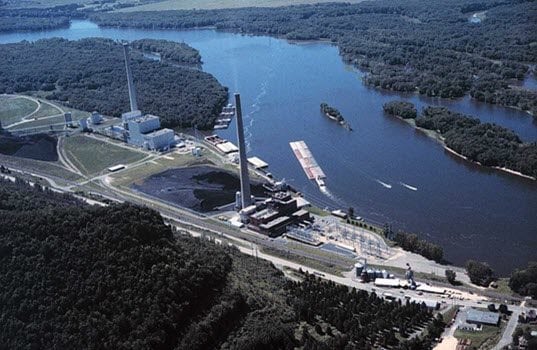NYT: President Obama’s Tough, Achievable Climate Plan
It imposes the first nationwide limits on carbon dioxide pollution from power plants, the source of 31 percent of America’s total greenhouse gas emissions. It will shut down hundreds of coal-fired power plants and give fresh momentum to carbon-free energy sources like wind and solar power, and possibly next-generation nuclear plants. And when taken together with the administration’s other initiatives, chiefly the fuel efficiency standards for cars and trucks, it reinforces Mr. Obama’s credibility and leverage with other nations heading into the United Nations climate change conference in Paris in December.
http://www.nytimes.com/2015/08/04/opinion/president-obamas-tough-achievable-climate-plan.html?ref=opinion&_r=0
Wall Street Journal: Climate-Change Putsch
Rarely do American Presidents display the raw willfulness that President Obama did Monday in rolling out his plan to reorganize the economy in the name of climate change. Without a vote in Congress or even much public debate, Mr. Obama is using his last 18 months to dictate U.S. energy choices for the next 20 or 30 years. This abuse of power is regulation without representation.
The so-called Clean Power Plan commands states to cut carbon emissions by 32% (from 2005 levels) by 2030. This final mandate is 9% steeper than the draft the Environmental Protection Agency issued in June 2014. The damage to growth, consumer incomes and U.S. competitiveness will be immense—assuming the rule isn’t tossed by the courts or rescinded by the next Administration.
http://www.wsj.com/articles/climate-change-putsch-1438642218
National Journal: Winners and Losers in President Obama’s Global Warming Rule
By Clare Foran and Jason Plautz
Cap-and-trade [Winner]
Northeastern states already have the nine-state Regional Greenhouse Gas Initiative, which is expected to be used as part of their compliance scheme, but states in the West and Midwest also kicked around the idea of linking up and allowing power generators to trade emissions, or at least creating concurrent standards that would allow them to do so. It was seen as a possibility under the proposal, but the final rule makes it explicit that states can embrace cap-and trade-and an interstate trading system. States who begin cutting pollution ahead of the 2022 deadline will get pollution credits that McCarthy said could be used as part of a trading system. Cap-and-trade is also a part of a federal model plan that states could adopt immediately, signalling how seriously the administration is treating the potential of interstate trading.
One economic option not given much weight in the final rule, however, is a carbon tax. McCarthy said that the EPA preferred to keep the suite of options to the “standard ways … the utility world does business.”
http://www.nationaljournal.com/energy/obama-climate-change-epa-rule-20150802
The Daily Signal: Obama’s New Energy Plan Could Cost $2.5 Trillion in Lost Economic Growth
By Nicolas Loris
The EPA’s idea of flexibility will not soften the economic blow; it merely means that families, individuals and businesses will incur higher costs through different state or regional-imposed mechanisms.
And by placing the entire onus on the states to devise their own carbon-cutting plans, the federal government evades all accountability to Americans and leaves state officials to take the political heat.
The climate benefit that Americans receive for higher electricity rates, unemployment and lower levels of prosperity is almost, if not completely, nonexistent. Government regulators could limit all greenhouse gas emissions produced by the United States, and that number jumps to only a tenth of a degree of averted warming.
http://dailysignal.com/2015/08/03/obamas-new-energy-plan-could-cost-2-5-trillion-in-lost-economic-growth/
NYT: A Climate Plan Businesses Can Like
By Jody Freeman and Kate Konschnik
Incentives in the plan will encourage the development of renewable energy. States can award credits to companies that buy or build renewable projects, and these companies can bank them even before the compliance period for meeting emissions limits begins. The federal government will match these state credits, which will help businesses comply with those limits. With these incentives, it pays to produce clean energy.
http://www.nytimes.com/2015/08/04/opinion/a-climate-plan-businesses-can-like.html?_r=0
LA Times: Obama’s Clean Energy Plan Doesn’t Go Far Enough
More important than the dollar amount are the greater losses of life, home and habitat expected to result from rising seas, weather catastrophes and changes in the environment that will affect the ability to grow food or keep wildlife from extinction.
http://www.latimes.com/opinion/editorials/la-ed-climate-change-obama-clean-energy-plan-20150804-story.html
IBD: Obama’s New EPA Rules: A Green Assault on Red States
Yet the costs of these new rules for highly suspect benefits are gigantic. The Heritage Foundation, for example, estimates about 500,000 lost jobs, close to $100 billion a year in lost output (about half a percentage point of GDP), and more than $1,000 a year in higher costs to families. In other words, all pain, no gain.
But the dirty little secret here is that these costs aren’t uniform across the country. Not even close.
It turns out coal-using and producing states are predominantly Republican red states. Meanwhile, the more Democratic a state is, the less the cost of the new coal rules to local rate payers and taxpayers.
http://news.investors.com/ibd-editorials/080315-764790-obama-seeks-to-kill-coal-fired-power-plants-with-new-rules.htm
The White House Blog: The Clean Power Plan: Myths and Facts
By Dan Utech and Rohan Patel
But just because this common-sense proposal will have huge benefits for hard-working Americans across the country, doesn’t mean some people won’t spread misinformation and launch false attacks. There will be critics of what we’re trying to do, and cynics who say it can’t be done. Long before the details of this plan were even decided, the special interests and their allies in Congress were already mobilizing to oppose it with everything they’ve got. In fact, we are likely to see the same tired arguments naysayers raised last year — and in 1990, when the United States tackled acid rain; and in the 1970s, when the Clean Air Act was passed.
https://www.whitehouse.gov/blog/2015/08/03/clean-power-plan-myths-and-facts









